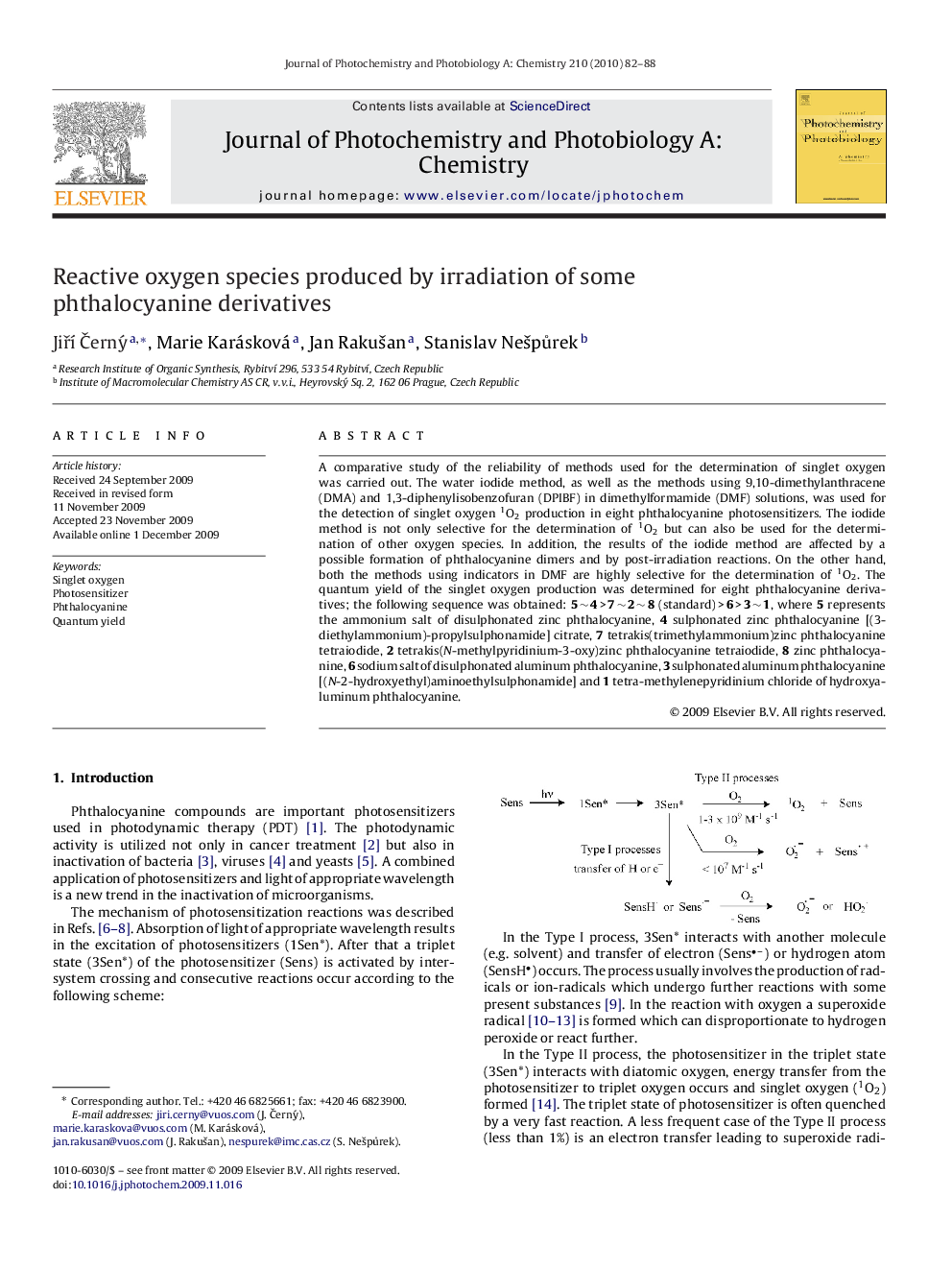| Article ID | Journal | Published Year | Pages | File Type |
|---|---|---|---|---|
| 27109 | Journal of Photochemistry and Photobiology A: Chemistry | 2010 | 7 Pages |
A comparative study of the reliability of methods used for the determination of singlet oxygen was carried out. The water iodide method, as well as the methods using 9,10-dimethylanthracene (DMA) and 1,3-diphenylisobenzofuran (DPIBF) in dimethylformamide (DMF) solutions, was used for the detection of singlet oxygen 1O2 production in eight phthalocyanine photosensitizers. The iodide method is not only selective for the determination of 1O2 but can also be used for the determination of other oxygen species. In addition, the results of the iodide method are affected by a possible formation of phthalocyanine dimers and by post-irradiation reactions. On the other hand, both the methods using indicators in DMF are highly selective for the determination of 1O2. The quantum yield of the singlet oxygen production was determined for eight phthalocyanine derivatives; the following sequence was obtained: 5 ∼ 4 > 7 ∼ 2 ∼ 8 (standard) > 6 > 3 ∼ 1, where 5 represents the ammonium salt of disulphonated zinc phthalocyanine, 4 sulphonated zinc phthalocyanine [(3-diethylammonium)-propylsulphonamide] citrate, 7 tetrakis(trimethylammonium)zinc phthalocyanine tetraiodide, 2 tetrakis(N-methylpyridinium-3-oxy)zinc phthalocyanine tetraiodide, 8 zinc phthalocyanine, 6 sodium salt of disulphonated aluminum phthalocyanine, 3 sulphonated aluminum phthalocyanine [(N-2-hydroxyethyl)aminoethylsulphonamide] and 1 tetra-methylenepyridinium chloride of hydroxyaluminum phthalocyanine.
